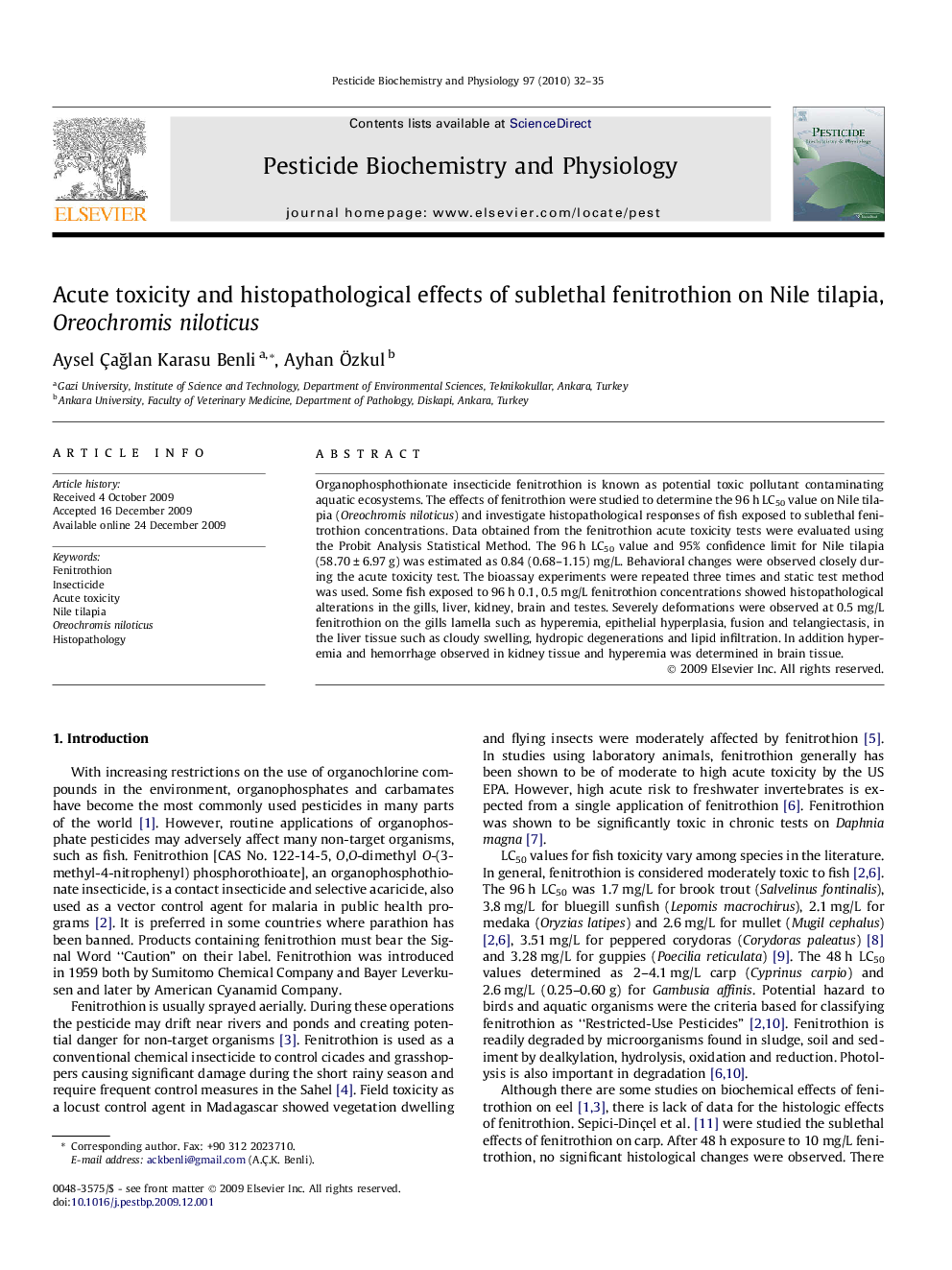| Article ID | Journal | Published Year | Pages | File Type |
|---|---|---|---|---|
| 2009462 | Pesticide Biochemistry and Physiology | 2010 | 4 Pages |
Organophosphothionate insecticide fenitrothion is known as potential toxic pollutant contaminating aquatic ecosystems. The effects of fenitrothion were studied to determine the 96 h LC50 value on Nile tilapia (Oreochromis niloticus) and investigate histopathological responses of fish exposed to sublethal fenitrothion concentrations. Data obtained from the fenitrothion acute toxicity tests were evaluated using the Probit Analysis Statistical Method. The 96 h LC50 value and 95% confidence limit for Nile tilapia (58.70 ± 6.97 g) was estimated as 0.84 (0.68–1.15) mg/L. Behavioral changes were observed closely during the acute toxicity test. The bioassay experiments were repeated three times and static test method was used. Some fish exposed to 96 h 0.1, 0.5 mg/L fenitrothion concentrations showed histopathological alterations in the gills, liver, kidney, brain and testes. Severely deformations were observed at 0.5 mg/L fenitrothion on the gills lamella such as hyperemia, epithelial hyperplasia, fusion and telangiectasis, in the liver tissue such as cloudy swelling, hydropic degenerations and lipid infiltration. In addition hyperemia and hemorrhage observed in kidney tissue and hyperemia was determined in brain tissue.
